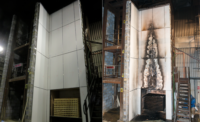The U.K. government has secured agreement from at least 35 large residential building developers to fund nearly $3 billion worth of fire protection measures in unsafe buildings at least 11 m tall on which the firms have worked over the last 30 years.
The move was prompted by the June 2017 fire that consumed London's 24-story Grenfell Tower, killing 72 people. An ongoing investigation into the fire has revealed numerous faults in design, procurement and construction.
Where companies responsible for faulty buildings cannot be found, the government plans to charge a levy on all new residential construction in England, which could raise another $4 billion over 10 years.
The new arrangements are intended to relieve leaseholders of faulty buildings from the often huge remediation costs. But it also leaves leaseholders of buildings less than 11 m tall liable to fund their own remediation.
The industry funding was "a significant step towards protecting innocent leaseholders and ensuring those responsible pay," said Michael Gove, the responsible secretary of state in announcing the deal on April 13. He also plans legislation to block uncooperative companies from building and selling homes.
"We absolutely concur with the secretary of state that leaseholders are the innocent victims of all of this and definitely shouldn't pay," says Stewart Baseley, executive chairman of the House Builders Federation.
But he says the levy is unfair. "Mr. Gove would also like to see us ... pay for everybody else's building, the buildings we didn't build."
Baseley says funding for this work should come from the government and "other actors who are equally involved," citing construction product manufacturers, contractors, freeholders and overseas developers as other parties that could possibly contribute.





